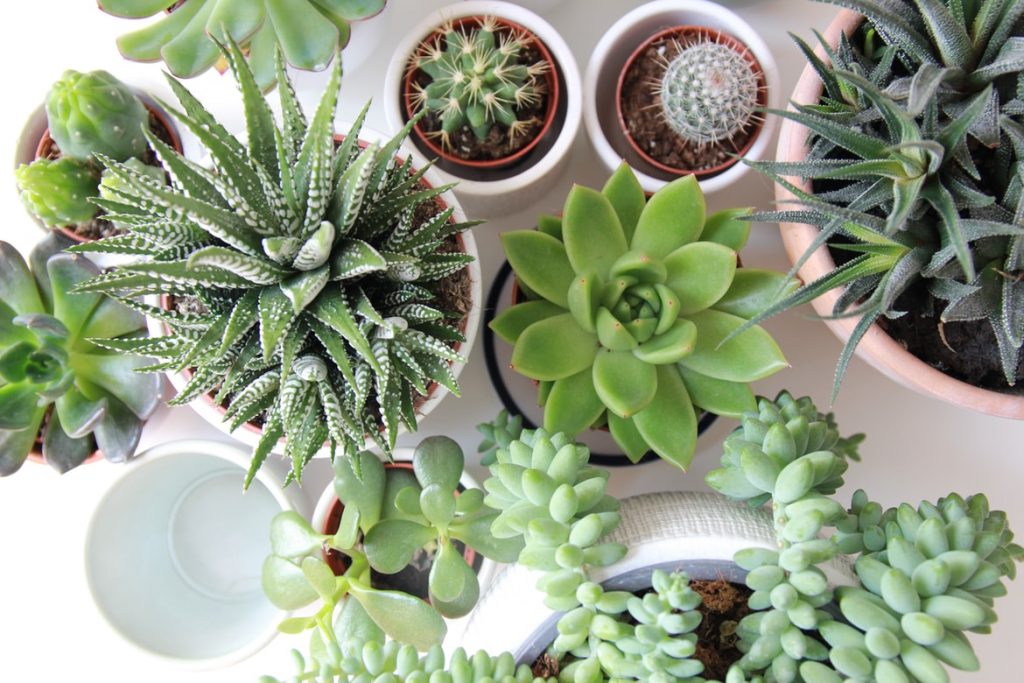Aloe vera is a perennial evergreen herb of the lily family with large, plump, pedunculate, or stem-topped leaves, often lanceolate or with short, broad leaves with sharp-toothed spines on the margins. The inflorescence is umbellate, racemose, spike-like, conical, etc., with red, yellow, or muddy spots, six petals, and six pistils. The base of the perianth is mostly conjoined into a tube.
Aloe vera is native to the Mediterranean, Africa, because it is easy to plant, for both flowers and leaves of the ornamental plants, quite popular.
Morphological Characteristics
Evergreen, succulent herb. Stems are short.
Leaves subclustered or slightly dichotomous (in young plants), plump and juicy, lanceolate, pinkish green, 15-35 cm long, 4-5 cm wide at the base, with a few small teeth at the tip and sparsely spine-like denticles at the margin.
Scape 60-90 cm tall, unbranched or sometimes slightly branched; racemes with dozens of flowers; bracts sublanceolate, apex acute; flower spots pendulous, sparsely arranged, yellowish with red spots; perianth ca. 2.5 cm long, lobes slightly recurved at the apex; stamens nearly as long as or slightly longer than perianth, style protruding from perianth.
Growth Habit
Soil
Aloe vera should have good permeability, high organic matter content, pH 6.5-7.2.
Light
Light-loving, semi-shade tolerant, avoid direct sunlight and excessive shade.
Temperature
The suitable growing environment temperature is 20-30℃, the best night temperature is 14-17℃. Below 10 ℃ stop growing, below 0 ℃ aloe foliage frost all wilted and died.
Water
Aloe vera has a strong drought resistance, away from the soil of the aloe vera can be put dry for months without dying. Aloe vera needs sufficient water during the growing season, but it does not tolerate waterlogging.
Ecology
The ecological environment (air, water, soil, etc.) of aloe vera should not be polluted and attention should be paid to ventilation.
Aloe vera is generally propagated asexually using techniques such as seedling division and transplanting or cuttings. Asexual propagation is fast and allows for stable maintenance of the excellent characteristics of the species.
Geographical Distribution
Aloe vera is native to the arid tropical regions of Africa and is distributed almost all over the world. Aloe vera is found in the wild around India and Malaysia, on the African continent, and in the tropics.
There are at least 300 wild species of Aloe vera, of which there are about 250 species in the African continent, about 40 species in Madagascar, and the remaining 10 species are distributed in Arabia and other places.
Main Values
Health Value
Aloe Vera contains 75 kinds of elements, which are almost identical to the substances required by human cells, have obvious health care value and are proudly called the “miracle plant” and “family medicine chest”.
Anti-aging
The mucin (protein) in aloe vera is composed of polysaccharides such as arboran A Baloe mannanaloetin, which is an important ingredient in preventing cellular aging and treating chronic allergies. Mucin is present in the body’s muscles and gastrointestinal mucosa, etc., and makes tissues elastic.
If there is not enough mucin, muscles, and mucosa lose their elasticity and become stiff and aging. The cells that make up the human body will gradually weaken and lose their ability to defend against germs and viruses if there is not enough mucin. In addition, mucin has the effect of strengthening the body and essence.
Promote Healing
It has a healing-promoting effect on artificial trauma rat’s back Aloe vera and can shorten the healing days for artificial conjunctival edema of rabbit Aloe vera. Aloe vera pulp preparation has a protective effect on skin wounds, burns, and X-ray local irradiation.
Heart-strengthening and Blood-activating
Calcium isocitrate in aloe vera has the effect of strengthening the heart, promoting blood circulation, softening hardened arteries, lowering cholesterol content, dilating capillaries, making blood circulation smooth, reducing cholesterol value, reducing heart burden, keeping blood pressure normal, and removing “toxins” from blood.
Immunity and Regeneration
Aloe-emodin A, wound hormone and glycopeptide mannitol (Ke-2) have an anti-viral infection, promote wound healing and recovery, have anti-inflammatory and antiseptic functions, absorb heat and swelling, soften the skin and maintain cellular vitality, and the combination of gel polysaccharide and healing acid also has wound healing activity.
Beauty Value
Aloe vera contains polysaccharides and a variety of vitamins for human skin has good nutrition, moisturizing, whitening effect. Aloe vera is the most suitable fresh leaf for direct beauty, i.e. Aloe curaçao, which has the properties of making skin astringent, softening, moisturizing, anti-inflammatory and bleaching.
It also has the effect of lifting sclerosis, keratinization, and improving wounds, not only preventing small wrinkles, bags under the eyes, and sagging skin, but also keeping the skin moist and delicate, and at the same time, treating skin inflammation, and is also good for acne, freckles, acne, as well as burns, cuts and insect bites. It is also effective for hair, keeping it moist and smooth and preventing hair loss.

